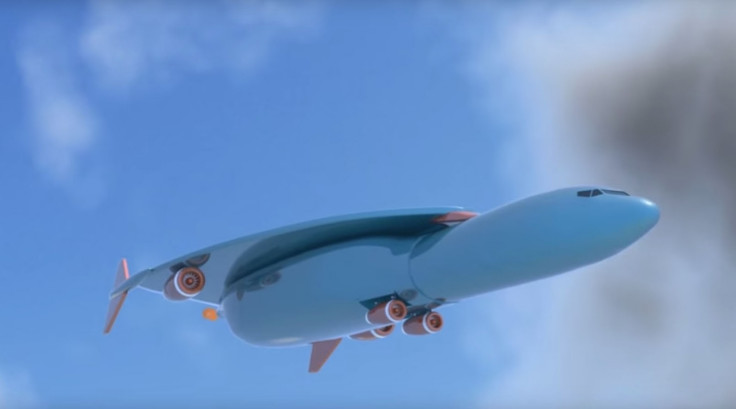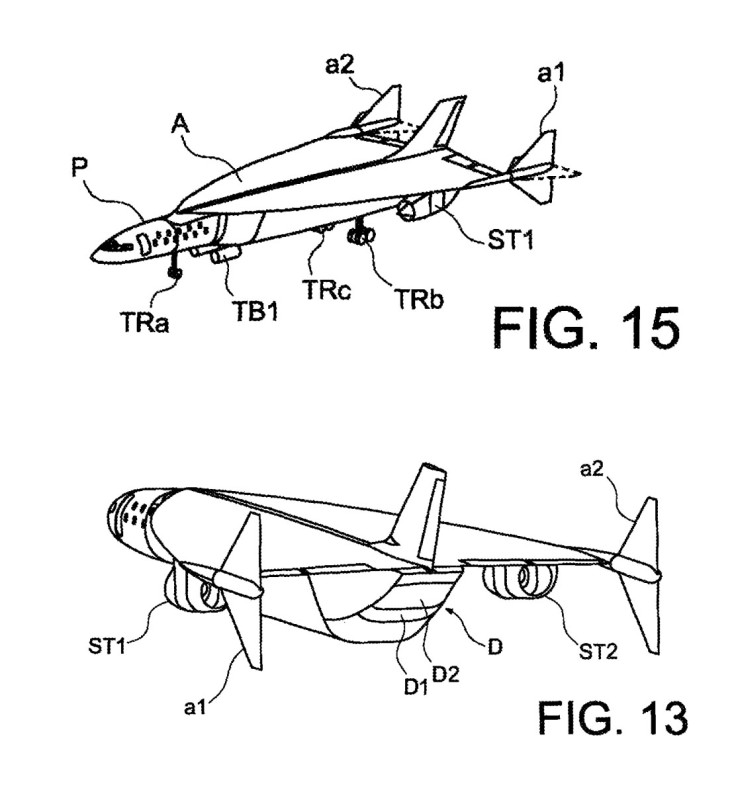Airbus patents hypersonic jet that can travel from London to New York in just one hour

The US Patent and Trademark Office has approved a patent application from French aircraft manufacturer Airbus for a hypersonic jet that could travel from London to New York in just one hour.
Airbus has patented a jet that will travel at speeds of up to Mach 4.5 – four and a half times the speed of sound – using three different types of engines. Two turbojets enable the aircraft to make a vertical take-off and reach the speed of sound, before retracting into a compartment in the plane.
Next, a rocket engine then guides the aircraft up to an altitude of more than 100,000ft, and then the rocket engine retracts and two wing-mounted ramjets propel the plane up to Mach 4.5.
According to the patent documents, Airbus foresees its hypersonic aircraft as being a passenger aircraft that can carry up to 20 passengers, while the military could use the plane for reconnaissance or to transport commandos on missions.
How does hypersonic work?

At the moment, hypersonic aircraft is more of a concept than a reality and is not currently safe for humans. The technology has been loosely defined as an aircraft that travels at about 3,800mph – five times the speed of sound, which is also known as Mach 5.
In order to achieve such high speeds, engineers have been developing supersonic combustion ramjet engines (Scramjet) technology since the 1950s, by changing the way planes function and making them lighter.
Rockets work by combining a liquid fuel with liquid oxygen in order to create thrust, and carrying both fuel and oxygen tanks onboard the aircraft add weight and slow it down.
To lighten the load, scientists have long theorised about an aircraft engine where the oxygen needed to create combustion is taken from the atmosphere around and passing through the vehicle as it flies, rather than having a tank onboard.
However, many test flights for hypersonic aircraft conducted by the US Air Force, Nasa and scientists in Russia and China have failed completely or shown promise and then crashed, and it has been considered to be more of a dream that perhaps could be used to increase missile speeds if it ever does work.
The most recent test flight of hypersonic aircraft hailed as a success by the US Air Force was conducted in 2013 by Nasa.
During that test flight, the X-51 Waverider was launched off a B-52 bomber already in flight and although it accelerated to Mach 5.1 while ascending to 60,000ft, it crashed into the sea a few minutes later.
Don't get too excited, this could take a while
"Hypersonic has been likened to lighting a candle in a hurricane. It's that tough. We've been tantalisingly close but still many decades away," Richard Aboulafia, an analyst at aerospace and defence industry advisory firm Teal Group, told IBTimes UK.
"Hypersonic is intriguing but the technological breakthroughs needed are enormous," he said. "I don't think you'll see much progress with the Chinese and Russians. If it happens, it will happen in the US."
Nevertheless, the US Air Force and the Department of Defense announced in July that they are teaming up to develop hypersonic passenger planes, with the aim of having them ready by 2023.
Wayne Plucker, aerospace & defense director at consulting company Frost & Sullivan, says that most work on hypersonic aircraft currently being done is mostly "wishful thinking".
"Hypersonic is really the science project domain, here the engines are key," he told IBTimes UK.
"Airbus and Jaxa are working on a zero emission hypersonic transport (Zehst). There is also a British company called Reaction Engines working on a hydrogen-based engine. However, these are very theoretical. Apart from that, the only other solution to superfast aircraft is rocketry, which is not very practical."
Airbus is very interested in developing faster aircraft and is currently involved in a joint venture with Aerion to produce business supersonic jets flying at Mach 1.6 in the mid-2020s.
© Copyright IBTimes 2025. All rights reserved.






















